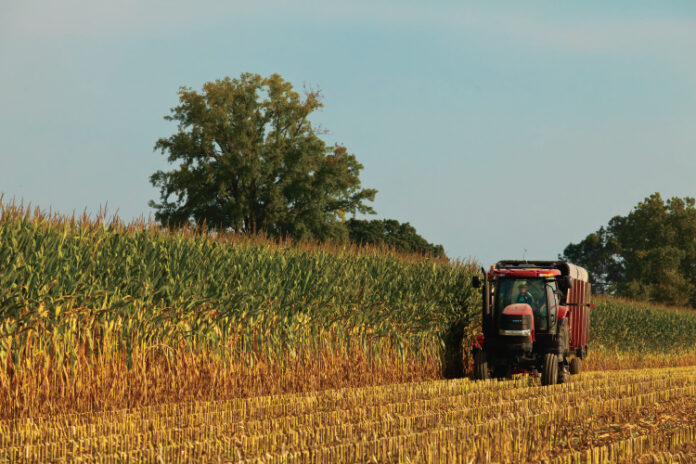Southern Indiana Business Report
WEST LAFAYETTE – Declining income expectations pushed farmer sentiment down in September, according to the newest Purdue University/CME Group Ag Economy Barometer. The barometer dropped 12 points to 88, which is the lowest reading since March 2016.
The Index of Current Conditions also fell 7 points to 76, which nearly matched levels from April 2020, during the height of COVID-19 concerns for farmers.
September’s survey revealed that farmers are increasingly worried about commodity prices, input costs, agricultural trade prospects and the potential impact of the upcoming election on their farm operations.
When asked to identify their top concerns for the coming year, low commodity prices and high input costs were nearly tied, with 34% of farmers citing input prices and 33% pointing to lower output prices as their primary concerns. Interest rates trailed behind as a top concern for 17% of respondents.
Producers’ apprehensions about commodity prices matched up with their lack of confidence in the future of U.S. agricultural exports; only 26% of respondents expect exports to rise over the next five years, the most pessimistic response to this question since it was first introduced in 2019. Additionally, 78% of producers expressed concern that government policy changes following the fall 2024 elections could impact their farms.
“The continued drop in the barometer reflects deepening concerns among farmers regarding expectations for farm income in 2024 and 2025,” said James Mintert, the barometer’s principal investigator and director of Purdue University’s Center for Commercial Agriculture. “It’s notable that producer sentiment dropped back to levels last seen in 2016 when the U.S. farm economy was in the early stages of an economic downturn. In addition to commodity prices and input costs weighing heavily on their operations, producers are also facing considerable uncertainty about what lies ahead for their farms with the possible government policy changes following the upcoming 2024 elections.”
The Farm Financial Performance Index fell for the third consecutive month, dropping to 68 in September from 72 in August. Farmers’ financial expectations have declined markedly compared to a year ago, as the index was at 86 in September 2023 — an 18-point difference. While the Farm Capital Investment Index increased by 4 points from August to a reading of 35, it sits just above its all-time low, indicating that many producers believe it is not an opportune time for making large investments.
The Short-Term Farmland Value Expectations Index dropped by 10 points to 95. This is the first time since 2020 that the index fell below 100, indicating that more farmers are expecting a decline in farmland values over the next year than those who anticipate an increase. This month’s shift from a positive to a weaker outlook is attributable to a significant decrease in the percentage of producers forecasting rising values and a rise in those who expect values to remain steady.
The September survey marks the fourth consecutive year that the barometer has included questions regarding cover crop usage among corn and soybean producers. Consistent with prior years’ surveys, more than half of the respondents indicated that they currently plant cover crops on part of their farms, while an additional 1 in 5 farmers reported planting cover crops sometime in the past. Interestingly, farmers who currently use cover crops say they are devoting a larger proportion of their farm’s acreage to cover crops than in the past.
In 2021, 41% of cover crop users noted planting them on more than 25% of their farm’s acreage. This figure rose to 50% in 2023, and in this year’s survey, 68% of cover crop users indicated planting cover crops on more than one-fourth of their farms.



